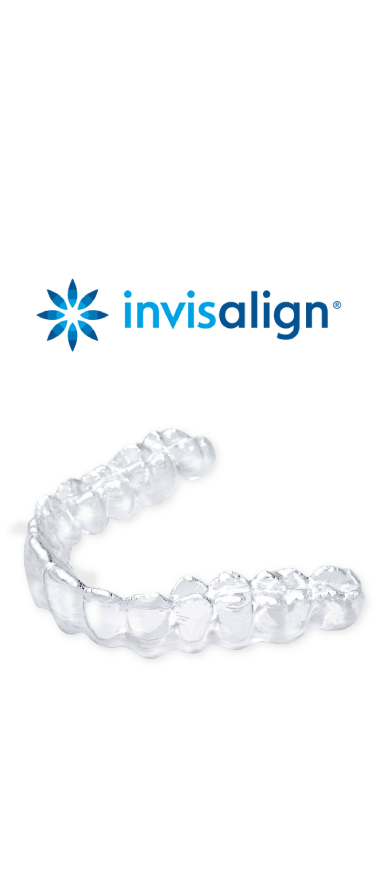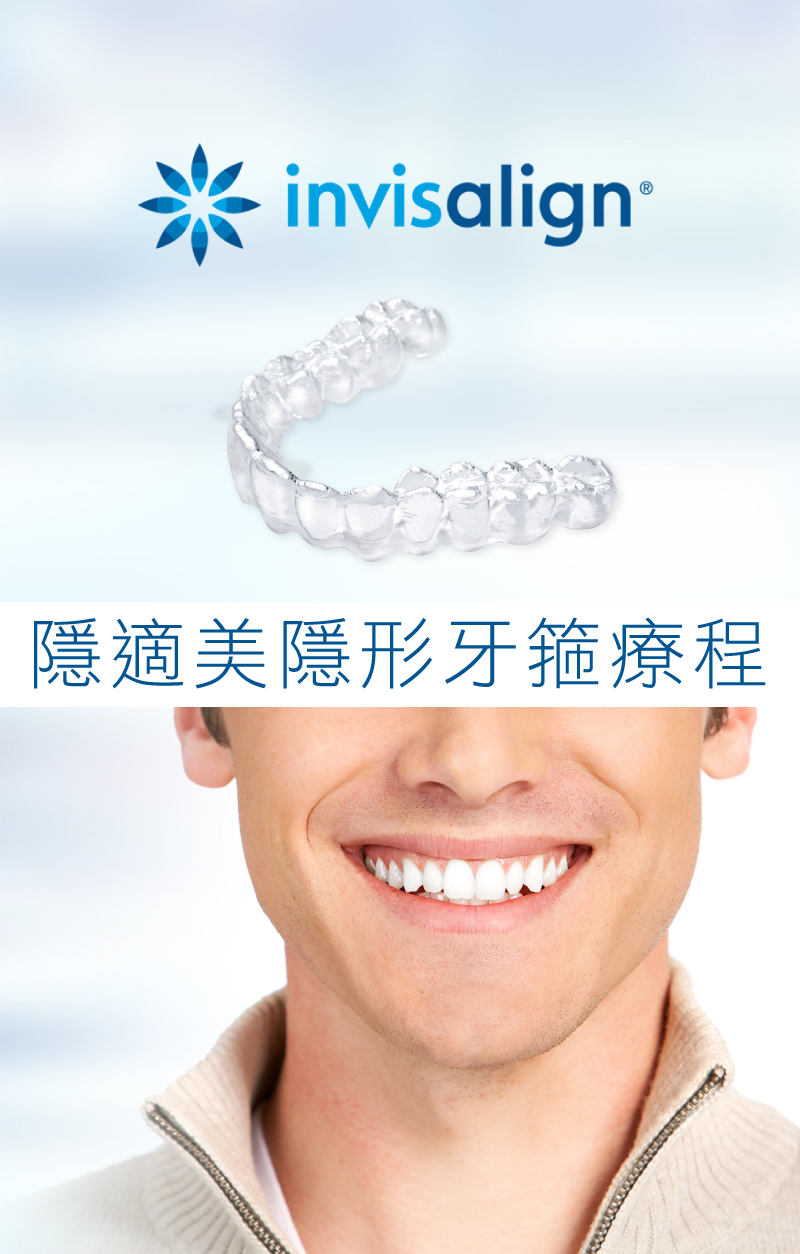Invisalign Invisible Braces Treatment
Invisible, comfortable, aesthetic, are the traits of the latest teeth correction technology - Invisalign. It is to apply a series of transparent, comfortable, and self-removable invisible braces to correct and align the teeth, no matter if they are too crowded, sparse or the corrected teeth have misaligned. By replacing the braces every two weeks, your teeth will slowly be adjusted and aligned. Invisalign can help you regain your charming smile while minimizing the impact on your daily life.
Register now

Do I need an extraction for Invisalign?
Not necessarily. Since the purpose of extraction is to increase rooms for orthodontic treatment and there are other ways to increase the space besides extractions. However, the dentist will decide whether extraction is needed before implementing the treatment.
Is Invisalign Invisible Braces a long treatment?
The duration of an Invisalign treatment is similar to that of a traditional orthodontic treatment. It takes about 1.5 to 2.5 years. Since the complexity of malocclusion varies from person to person, a more accurate estimation can only be made after the examination by the dentist.
How will the teeth be corrected by Invisalign?
The teeth will be aligned and corrected gradually only when the dentist’s instructions are followed correctly by putting on the custom-made "Invisalign" braces and changing to a new pair of braces every two weeks.
Product Description
Product Efficacy
Applicable Areas and Precautions
Unnoticeable transparent braces |
Change a new braces every two weeks on your own (follow-up appointments are still needed) |
Removable braces which enable a regular diet |
No metallic material that stimulates the gums and oral mucosa, and no abrasion to the mouth |
Brush and floss normally |
Approved by the FDA and NMPA (National Medical Products Administration)
|
The manufacturing process is certified by the ISO |
Facilitate healthy teeth and gum |
Improve articulation |
Better appearance that increases self-confidence |
Improve chewing ability |
Applicable Areas:
Teeth
Precautions:
Invisalign may not be suitable for children as their teeth are relatively shorter and affect the coverage of the braces. |
Severe malocclusion may take longer time to correct |









